Arizona
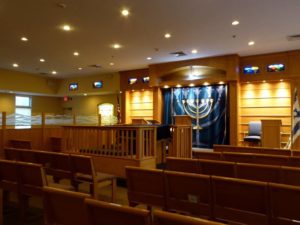 Permanent settlement occurred after the California Gold Rush of 1848–50. The discovery of gold brought many many Jewish businessmen to the state from 1862 to 1864. When the mines were exhausted or proved unprofitable, businesses and entire communities were abandoned, thus the number of Jews fluctuated sharply.
Permanent settlement occurred after the California Gold Rush of 1848–50. The discovery of gold brought many many Jewish businessmen to the state from 1862 to 1864. When the mines were exhausted or proved unprofitable, businesses and entire communities were abandoned, thus the number of Jews fluctuated sharply.
During the mining boom in Tombstone (1881) the first organized Jewish community in the state emerged. From then until Arizona’s statehood in 1912, an increasing number of Jews were in professions, such as law and medicine. The Jewish population grew rapidly after World War II. Synagogues existed in Tucson, Phoenix, Mesa, and Scottsdale. Among the fields that Jews were most often found at the beginning of the 21st century were merchandising, the professions, technical fields, and service industries.
Arizona had 120,000 Jews; with 84,000 in Phoenix metropolitan and 25,000 in Tucson. The Prescott Jewish community was estimated to be over 1,000. Organized Jewish congregations were also found in Flagstaff, Kingman, Lake Havasu, Sedona, and Yuma. In greater Phoenix there are 22 synagogues, and two large Jewish community centres. An Orthodox day school, was opened in 1965 and since then five other day schools, both primary and high school, have opened. There are several kosher restaurants.
As of 2017, Arizona’s Jewish population was approximately 106,725.
New Mexico
 The history of the Jews in Mexico begun in 1519 with the arrival of Conversos.Today, most Jews in Mexico are descendants of this immigration. Since the 1880s, there have been efforts to identify descendants of colonial era Conversos both in Mexico to return them to Judaism. New Mexico became a settled part of New Spain with the expedition northward from Mexico of Juan de Onate in 1598. The takeover of the southwest by the United States from the mid-1840s allowed the influx of Jewish traders who had accompanied the American military expeditions into the area. These earliest Jewish settlers, mostly from Germanic states, established a pattern of inviting family members or acquaintances to join them after they established themselves as merchants.
The history of the Jews in Mexico begun in 1519 with the arrival of Conversos.Today, most Jews in Mexico are descendants of this immigration. Since the 1880s, there have been efforts to identify descendants of colonial era Conversos both in Mexico to return them to Judaism. New Mexico became a settled part of New Spain with the expedition northward from Mexico of Juan de Onate in 1598. The takeover of the southwest by the United States from the mid-1840s allowed the influx of Jewish traders who had accompanied the American military expeditions into the area. These earliest Jewish settlers, mostly from Germanic states, established a pattern of inviting family members or acquaintances to join them after they established themselves as merchants.
It was only after the railroad reached New Mexico that the first formal institutions appeared. The first congregation, Congregation Montefiore, was in Las Vegas in 1884. Albuquerque’s Jews organized Congregation Albert in 1897, today the oldest extant religious community in the state. In 1920 Congregation B’nai Israel was formed in Albuquerque.
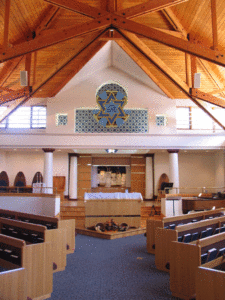 In 1900 until 1950, an estimated 7,300 Jewish people immigrated to Mexico from Eastern Europe, 2,640 from Spain or the former Ottoman Empire, and 1,620 from Cuba and the United States. The Monte Sinaí community was founded in 1912.
In 1900 until 1950, an estimated 7,300 Jewish people immigrated to Mexico from Eastern Europe, 2,640 from Spain or the former Ottoman Empire, and 1,620 from Cuba and the United States. The Monte Sinaí community was founded in 1912.
The Jewish population stood at somewhat over 1,100 in 1940. By the year 2001, it had grown to at least 11,500, outpacing the growth of the general population. Increased numbers also altered the economic makeup of the Jewish community. Where in 1940 merchants had formed an overwhelming proportion of the Jews’ economic activity, the changing economy fostered by the federal government’s goals brought in a professional population of scientists, engineers, professors, and doctors.
In Greater Mexico City, notable communities exist in Colonia Hipódromo Condesa, Polanco, Lomas de Chapultepec, Santa Fe and Huixquilucan, State of Mexico .[3] Of the sixteen Jewish schools about a dozen of those are in Mexico City which also has over two dozen synagogues. In 2017, New Mexico’s Jewish population was approximately 12,625 people.
Oklahoma
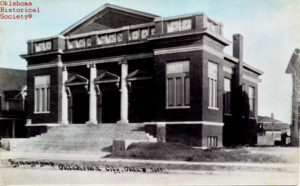 Jewish settlers began coming to Oklahoma and Indian Territory as early as 1875. The Jewish population grew as Oklahoma blossomed into a boom area, after the famous Land Run of 1889 and statehood in 1907. The early settlers came as peddlers and salesmen and later became shopkeepers and retail merchants.
Jewish settlers began coming to Oklahoma and Indian Territory as early as 1875. The Jewish population grew as Oklahoma blossomed into a boom area, after the famous Land Run of 1889 and statehood in 1907. The early settlers came as peddlers and salesmen and later became shopkeepers and retail merchants.
 In 1901, there were 1,000 Jews in Oklahoma Territory. In 1890 High Holiday services were conducted in Oklahoma City. In Ardmore there were 50 Jewish people in 1890 and about 100 in 1907, when Temple Emeth, was organized. In 1904 Emanuel Synagogue was organized. In Tulsa, Temple Israel was organized in 1914. Temple Beth Ahabah was founded in 1905.
In 1901, there were 1,000 Jews in Oklahoma Territory. In 1890 High Holiday services were conducted in Oklahoma City. In Ardmore there were 50 Jewish people in 1890 and about 100 in 1907, when Temple Emeth, was organized. In 1904 Emanuel Synagogue was organized. In Tulsa, Temple Israel was organized in 1914. Temple Beth Ahabah was founded in 1905.
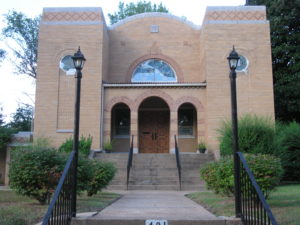 In 1967 the temple’s membership numbered 325 families, representing about half of the Jewish population of the city. There are synagogues in Ardmore and Muskogee, as well as Ponca City and Seminole. Oklahoma City, has three synagogues and a Jewish population of 2,600 people. Tulsa has two congregations.
In 1967 the temple’s membership numbered 325 families, representing about half of the Jewish population of the city. There are synagogues in Ardmore and Muskogee, as well as Ponca City and Seminole. Oklahoma City, has three synagogues and a Jewish population of 2,600 people. Tulsa has two congregations.
In 2017, Oklahoma’s Jewish population was approximately 4,625 people.
Texas
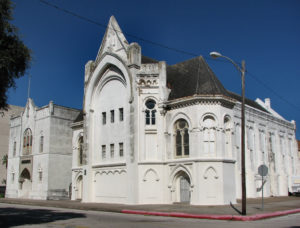 The state’s southern portion, extending as far north as San Antonio, was part of a massive 1590 land grant issued to Luis de Carvajal y de la Cueva, a Spanish adventurer several of whose family members were executed by the Mexican Inquisition as secret Jews; Carvajal himself was a devoted Catholic but was imprisoned until his death for sheltering his crypto-Jewish relatives. Still, no Carvajal settlements existed north of the Río Grande in present-day Texas, and Spanish colonization left no record of Sephardic practice there.
The state’s southern portion, extending as far north as San Antonio, was part of a massive 1590 land grant issued to Luis de Carvajal y de la Cueva, a Spanish adventurer several of whose family members were executed by the Mexican Inquisition as secret Jews; Carvajal himself was a devoted Catholic but was imprisoned until his death for sheltering his crypto-Jewish relatives. Still, no Carvajal settlements existed north of the Río Grande in present-day Texas, and Spanish colonization left no record of Sephardic practice there.
The first report of self-identified Jews was in the early 1830s at Velasco, on the Gulf Coast. After Texas joined the United States in 1846, the Jewish population grew still faster, and as Jews gathered in the state’s largest cities they began to shape the rudiments of institutional Jewish life. Organized Jewish life did not appear until the 1850s, after the region had been annexed into the United States. It began in Galveston with the establishment of Texas’ first Jewish cemetery in 1852. Houston’s Beth Israel was formally chartered as the state’s first Jewish congregation. B’nai Israel in Galveston was founded in 1868, followed by other Jewish congregations in Victoria (1872), Jefferson (1873), San Antonio (1874), Dallas (1875), Austin (1876), Waco (1879), Brenham (1885), Tyler (1887), Marshall (1887), Fort Worth (1892), and El Paso (1900).
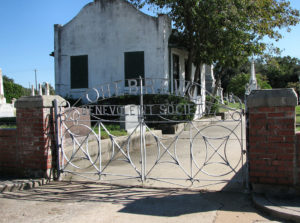 Jews were initially attracted to Texas for the enormous commercial opportunities of an expanding region. From the coastal commercial centers of Galveston and Houston, where Jews participated heavily in the cotton trade, Jewish retailers followed the state’s burgeoning rail system: by the early 20th century Jews were present in at least 70 communities, many operating the town’s only retail establishment. In larger cities, Jews dominated the retail industry and built many of the state’s premier retailing institutions including Sanger Bros. and Neiman-Marcus. In several cases, as frontier customers paid in barter rather than cash, retail businesses led Jewish families into the state’s signature industries: cattle and oil.
Jews were initially attracted to Texas for the enormous commercial opportunities of an expanding region. From the coastal commercial centers of Galveston and Houston, where Jews participated heavily in the cotton trade, Jewish retailers followed the state’s burgeoning rail system: by the early 20th century Jews were present in at least 70 communities, many operating the town’s only retail establishment. In larger cities, Jews dominated the retail industry and built many of the state’s premier retailing institutions including Sanger Bros. and Neiman-Marcus. In several cases, as frontier customers paid in barter rather than cash, retail businesses led Jewish families into the state’s signature industries: cattle and oil.
Jewish communities in small Texas towns are disappearing as the population clusters in metropolitan areas and their suburban and exurban outgrowths, though congregations remain active in smaller cities including Abilene, Amarillo, Brownsville, Corpus Christi, El Paso, Longview, Lubbock, Odessa, and Tyler. In large cities, Jews maintain a variety of religious and social institutions which sustain virtually every political, social, and worship style.
In 2017, Texas’s Jewish population was approximately 166,505 people.